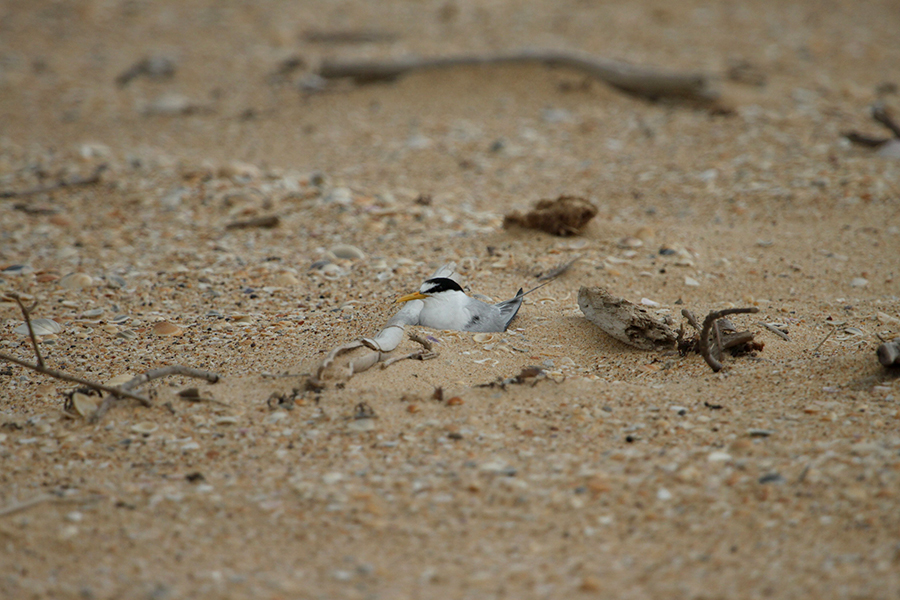
Midcoast Council is calling on Hawks Nest and Tea Gardens residents and visitors to help protect the nests of the rare Little Terns who have made the Winda Woppa sand stockpile their summer home.
“Hawks Nest attracts visitors from all over the state during summer with its white beaches and beautiful blue water,” said Council’s Natural Assets Officer Drew Morris.

“It’s also turning into a destination of choice for some rare international visitors.
Little Terns (Sternula albifrons) are arriving in Hawks Nest to breed after their annual migration to eastern Asia.
“Their accommodation of choice while visiting is the sand stockpile at the southern tip of Winda Woppa, which Council has established for the ongoing renourishment of Jimmys Beach,” Drew said.
Some 20 nests have been reported around the stockpile with young birds already seen around the nests.
“It’s not unheard of for these birds to nest on dredge spoil in other areas, and the birds similarly
nested on an island in Wallis Lake several years back.”
“We had a handful of nesting birds on the Winda Woppa stockpile late last season, and the recent dredging campaign in September has obviously been to their liking as it seems they’ve bought some friends back this year.”
These birds arrive in summer to breed and then depart again in early autumn.
This is a good environmental outcome and something Council will manage in the future by striving to limit operational works in the area to outside these times.
Birdlife Australia’s NSW Project Coordinator Mick Roderick said, “Little Terns are endangered mostly because they breed in areas that people like to frequent, such as beaches and sandy cays.
When we find breeding colonies like this it is very important for us to step back and give the birds a chance to breed. There are other areas where we can enjoy a climb up a sand hill this summer.”
Council is asking that residents stay away from the stockpile during the summer period to allow the birds to raise their young in peace.
Dogs in particular can disturb these birds and harm the nestlings.
The birds generally nest in a scrape of sand rather than a traditional ‘nest’ and their eggs are extremely well camouflaged.
For this reason, it’s best to just give the area a wide berth, rather than walking close and trusting that you’ll see a nest before you disturb it.
Council will place signage on the beach and near the stockpile to alert visitors to their presence and request people (and their dogs) keep their distance from the birds.
